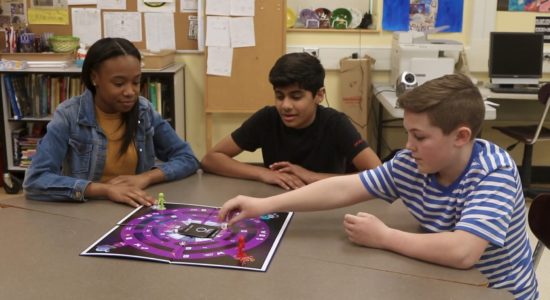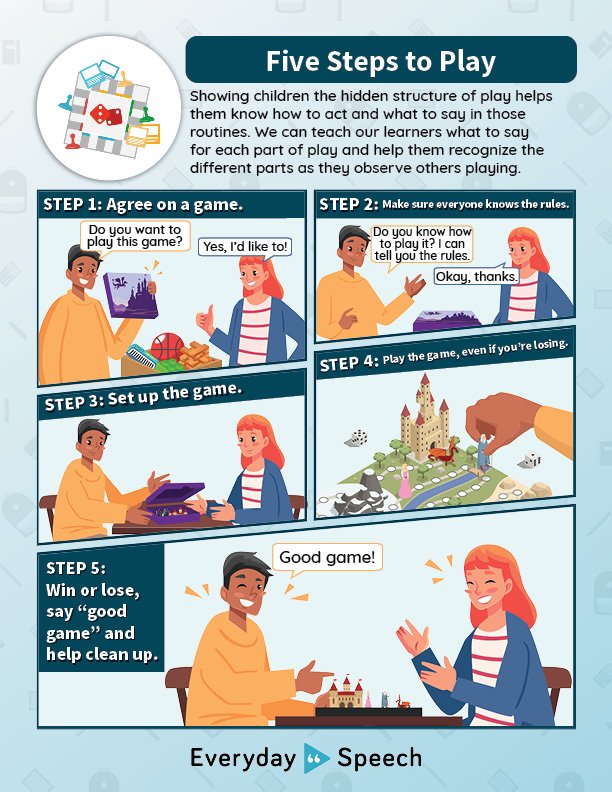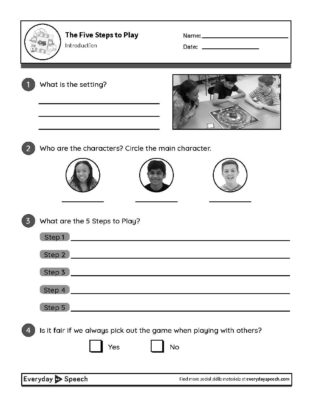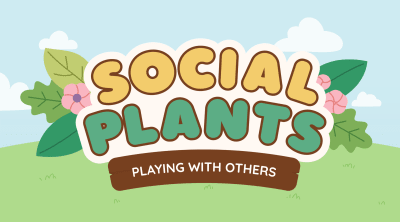Try the no-prep way to teach Playing With Others
Take the prepwork out of teaching essential social-emotional skills with Everyday Speech! Subscribe to access step-by-step curriculum and over 1,000 videos, games, and more.

Preview an SEL skills lesson: Playing With Others

<INTRODUCTION, animated scene: Boy1 and Boy2 are playing a board game.>
Narrator: When we play a game with our friends, we want to make sure everyone has fun. It’s important to be a good sport when we play.
Boy2: (wins game)
Boy1: Good game!
Narrator: A good sport makes sure not to brag if they win or complain if they lose. It’s more important to have fun playing the game. There are 5 steps we can do while playing to make sure everyone is happy to play a game with us.
<SKILLS>
Narrator: When we play a game with others:
First, we make sure we all agree on a game.
Next, make sure everyone knows how to play.
Then, we set up the game. This shouldn’t take too long. We want to have the most time to play the game.
At the end, we say “good game” whether we win or lose and help clean up.
Let’s see what this looks like.
<SCENE 1 – Eric, Kiara, and Jackson are over by game closet, looking at a bunch of games.>
Eric: What do you guys want to play?
Kiara: (pointing to one game) I like playing Race Against Time. Do you guys like that?
Jackson: I love that game!
Kiara: (brings the game over to the meeting table)
<SCENE 2 – meeting table>
Eric: Does everybody know how to play?
Jackson: I do.
Kiara: I haven’t played in a while.
Jackson, Kiara, and Eric: (sets up game)
Eric: We take cards on our turn and roll the dice. The first player to reach the finish line wins. The youngest player gets to go first.
Kiara: That’s me!
Jackson, Kiara, and Eric: (plays the game)
Kiara: I won!
Eric: Aw, so close. Good game, Kiara! Maybe we can play outside.
Jackson: Sure.
Eric: But first, let’s clean up.
Jackson, Kiara, and Eric: (clean up game pieces and board)
Eric: (thought bubble) That was really fun. Because I was a good sport, everyone had fun, and I can play more games with them another time.
Kiara: (thought bubble) I had a nice time playing with Eric. He was nice even when I won. I’d like to play with him again.
<FROM MY VIEW>
Eric: When I play games with others, I pick a game that we’ve all agreed on. I ask if everyone knows the rules, so we all know how to play the game. If someone doesn’t know how to play, I make sure to clearly explain the rules so they can enjoy the game too. Then we set up the game. It shouldn’t take too long because we want to save the most time to play the game. After we’re done, I always say good game whether I win or lose. Then I make sure to help everyone clean up.
<WHAT DID WE LEARN?>
Narrator: So, what did we learn?
We follow five steps when we play with others.
First, we need to agree on a game.
Next, we make sure everyone knows how to play.
Then, we set up the game. This shouldn’t take too long. We want to have the most time to play the game.
At the end, we say good game and help clean up.
Try Everyday Speech free for 30 days to see all our videos and their companion activities and games!






